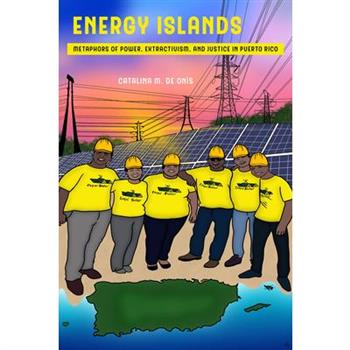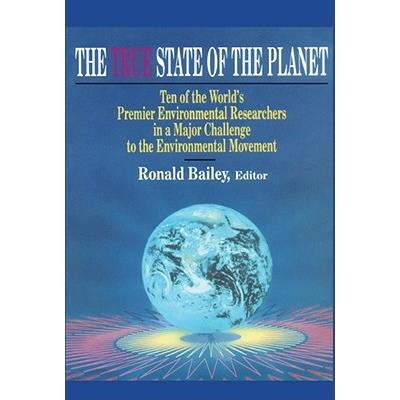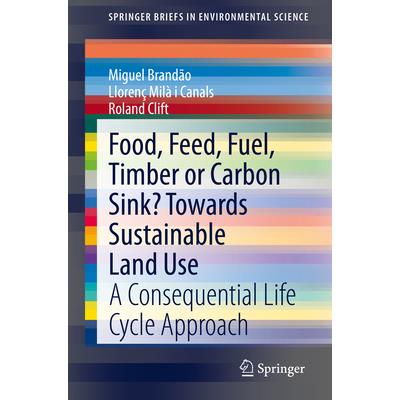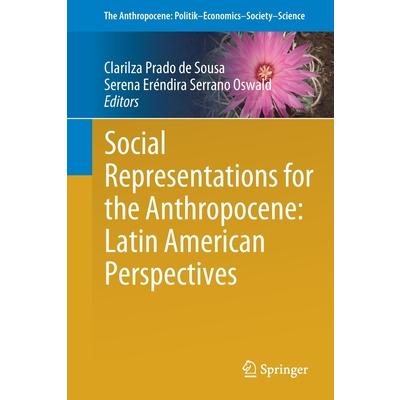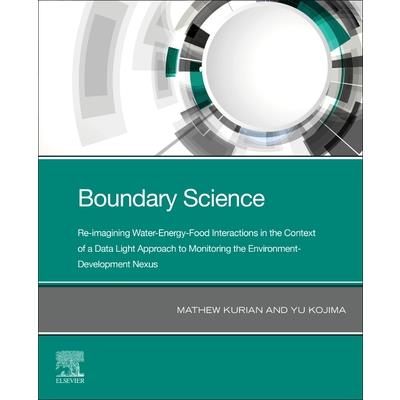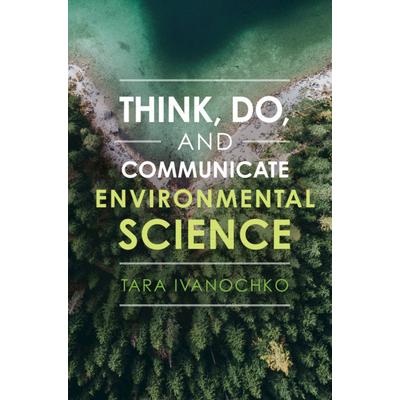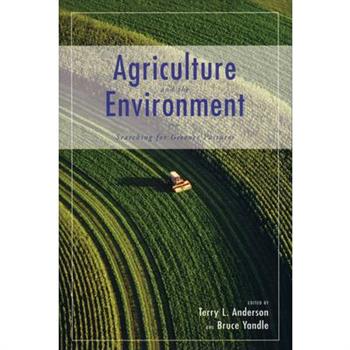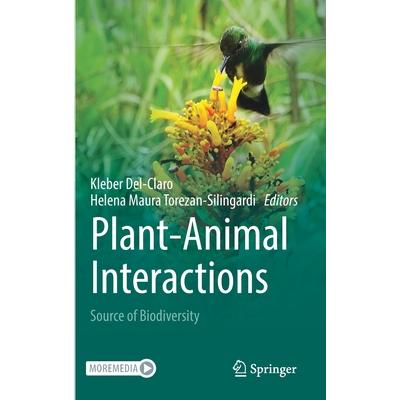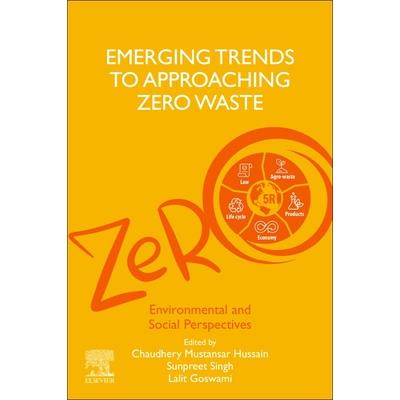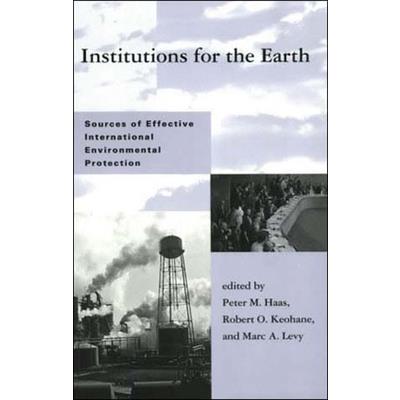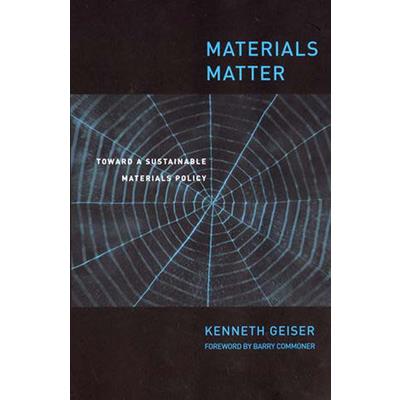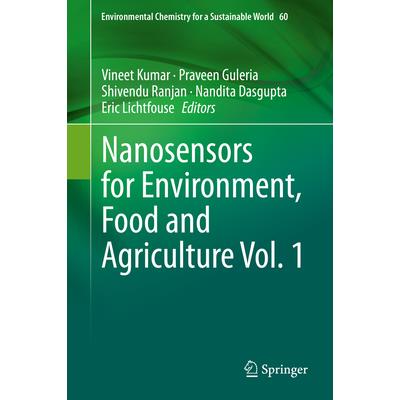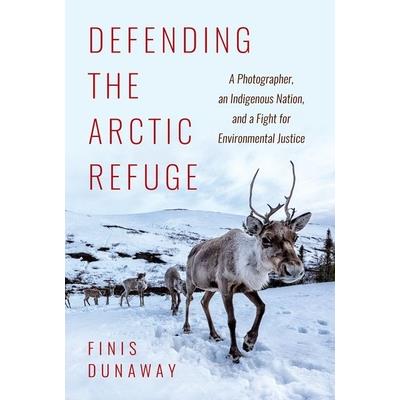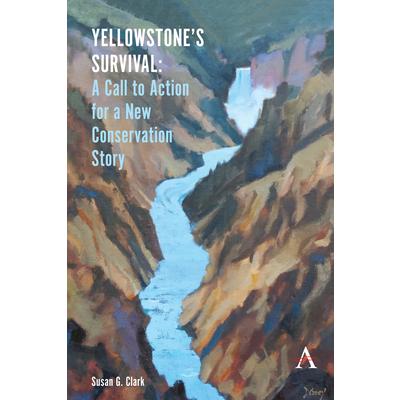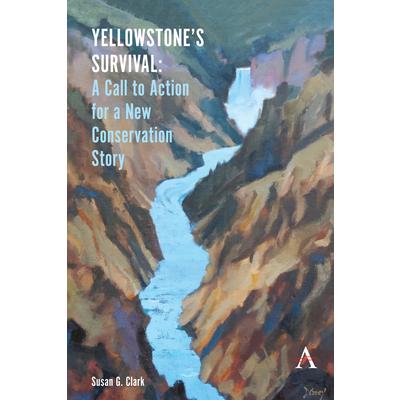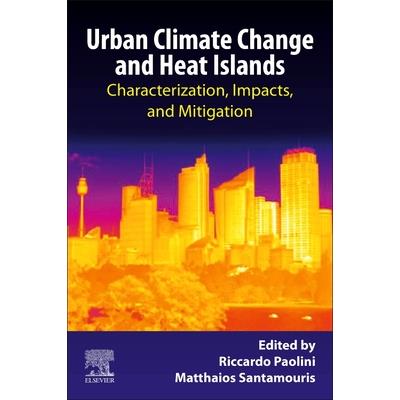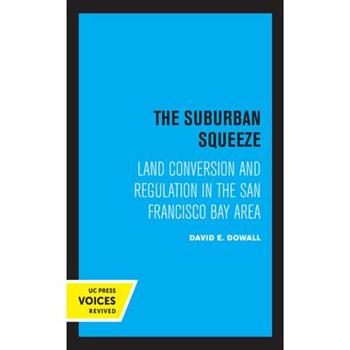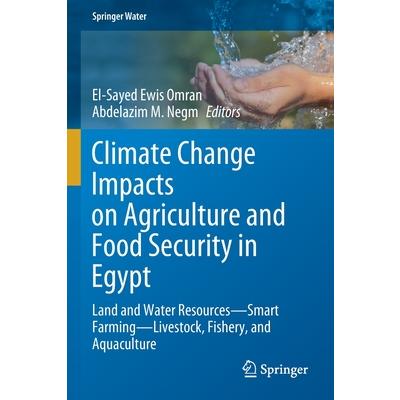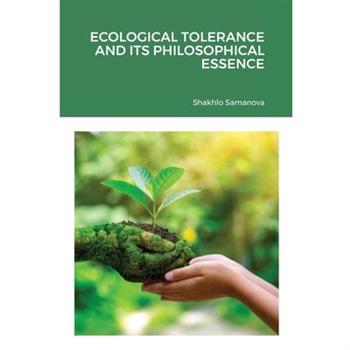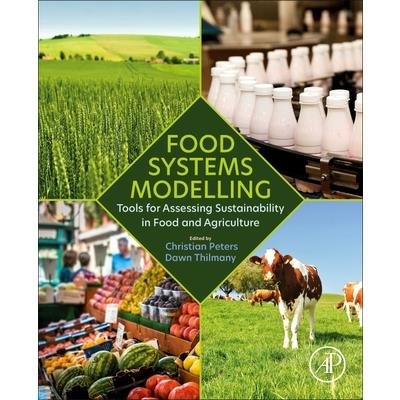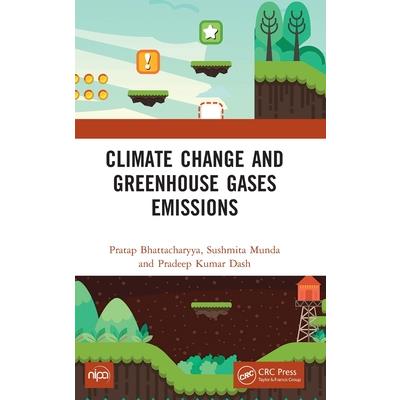Energy Islands, 1
Energy Islands provides an urgent and nuanced portrait of collective action that resists racial capitalism, colonialism, and climate disruption. Weaving together historical and ethnographic research, this story challenges the master narratives of Puerto Rico as a tourist destination and site of "natural" disasters to demonstrate how fossil fuel economies are inextricably entwined with colonial practices and how local community groups in Puerto Rico have struggled against energy coloniality to mobilize and transform power from the ground up.Catalina M. de On穩s documents how these groups work to decenter continental contexts and deconstruct damaging hierarchies that devalue and exploit rural coastal communities. She highlights and collaborates with individuals who refuse the cruel logics of empire by imagining and implementing energy justice and other interconnected radical power transformations. Diving deeply into energy, islands, and power, this book engages various metaphors for alternative world-making.
Climate Change Science
Climate Change Science: Causes, Effects and Solutions for Global Warming presents unbiased, state-of-the-art, scientific knowledge on climate change and engineering solutions for mitigation. The book expands on all major prospective solutions for tackling climate change in a complete manner. It comprehensively explains the variety of climate solutions currently available, including the remaining challenges associated with each. Effective, complementary solutions for engineering to combat climate change are discussed and elaborated on. Some of the more high-risk proposals are qualitatively and quantitatively compared and contrasted with low-risk mitigation actions to facilitate the formulation of feasible, environmentally-friendly solutions. The book provides academics, postgraduate students and other readers in the fields of environmental science, climate change, atmospheric sciences and engineering with the information they need for their roles. Through exploring the fundamental information currently available, exergy utilization, large-scale solutions, and current solutions in place, the book is an invaluable look into how climate change can be addressed from an engineering-perspective using scientific models and calculations.
True State of the Planet
In the 25 years since the first Earth Day in 1970, the environmental movement has spawned a new generation of scientists asking vital questions about the true state and fate of the planet. But, surprisingly, some of their answers -- and even the questions themselves -- contradict the movement's deepest beliefs. Why are reserves of oil, precious metals, and other natural resources more plentiful than ever before? Why has the population growth of the twentieth century brought rising standards of living for nearly all? In The True State of the Planet ten premier scholars shatter the myths of overpopulation, food, global warming, and pesticides, while redirecting environmentalists' concerns to the far more urgent problems of fisheries, fresh water, and third-world pollution -- and the political causes behind them.
Environmental Resilience and Transformation in Times of Covid-19
Environmental Resilience and Transformation in Times of COVID-19: Climate Change Effects on Environmental Functionality is a timely reference to better understand environmental changes amid the COVID-19 pandemic and the associated lockdowns. The book is organized into five themes: (1) environmental modifications, degradation, and human health risks; (2) water resources--planning, management, and governance; (3) air quality--monitoring, fate, transport, and drivers of socioenvironmental change; (4) marine and lacustrine environment; and (5) sustainable development goals and environmental justice. These themes provide an insight into the impact of COVID-19 on the environment and vice versa, which will help improve environmental management and planning, as well as influence future policies. Featuring many case studies from around the globe, this book offers a crucial examination of the intersectionality between climate, sustainability, the environment, and public health for researchers, practitioners, and policymakers in environmental science.
Data, Statistics, and Useful Numbers for Environmental Sustainability
Data, Statistics, and Useful Numbers for Environmental Sustainability: Bringing the Numbers to Life is an accessible reference for researchers working in environmental and sustainability fields who need to communicate the latest data and statistics to reinforce their own research or message. The book compiles the most-needed numbers into one resource and covers a variety of relevant topics, including materials, energy, environment, city planning, electronics, and waste. This handbook is clearly indexed and full of comprehensive tables, making it easy to find answers. Researchers in environmental and sustainability-related fields will find it an invaluable resource.
Food, Feed, Fuel, Timber or Carbon Sink? Towards Sustainable Land Use
This book provides a holistic framework for assessing the environmental and economic impacts of land-use strategies for a range of purposes, such as food, animal feed, biomass and biofuels, and timber. Using land for one purpose negates its use for any other competing purpose. Given that it is in limited supply, land needs to be optimised so that it can meet the increasing demand for crops of a growing and wealthier human population, while providing ecosystem services, such as carbon storage (i.e. climate-change mitigation). The framework is quantitative and includes various indirect effects, like indirect land-use change, and is a robust basis with which to assess global impacts from land-use decisions on climate change, ecosystem services and biodiversity.
M繹glichkeiten Der Kanalzustandsprognose
Dieses Buch bietet eine detaillierte Darstellung der Vorgehensweise der Erstellung von Kanalzustandsprognosen sowie eine praxisorientierte Anleitung f羹r die Interpretation der Ergebnisse.
Social Representations for the Anthropocene: Latin American Perspectives
1. Introduction: Building a Sand String: Social Representations for the Anthropocene.- 2. Social Representations and History: Theoretical Problems.- 3. Social Representations in the Study of DisasterRisk in the Municipality of Piedecuesta, Santander (Colombia): The Social Cognitive Dimension.- 4 Confluences Between Social Representations Theory and the Psychology of Active Minorities.- 5 Relationships Between Beliefs and Social Representations: ABrief Theoretical Reflection.- 6 Social Representations of Justice as Developing Structures: Sociogenesis and Ontogenesis.- 7. Common Sense in Gramsci's and Moscovici's Writings: Inspiration, Subversion and Revolution in Sociopolitical and Scientific Fields.- 8. Diffusion, Propaganda and Propagation: The Actuality of the Construct. 9. The Figurative Core of Social Representations and Figures of Thought.- 10 "The Tradition Must Carry on" Representationsand Social Practices of Gender and Ethnicity Among Members of a Gypsy Group in a BrazilianRegion.- 11. The Gendered Medicalized Body, Social Representations, and Symbolic Violence: Experiences of Brazilian Women with Artificial Contraceptive Methods. 12. Social Representations Theory in the Field of Nursing: Professional Autonomy, Vulnerability and Spirituality/Religiosity as Representational Objects.- 13. Children, Multiple Ordinations of Reality and Social Representations: Dialogues with L矇vy-Bruhl.- 14 The Contribution of Social Representations Theory to Science Education. - 15 Possible Dialogues between Social Representations and Educational Policies: The Dilemma of Data Analysis.- 16. Social Representations of Violence among Public School Students.- 17 Quality School Education from the Perspective of Young Students: What is the Future?.- 18 Social Representations in Motion: Concept Construction on Changing Subjects and Contexts. 19. Social Representations: A Bet on Social Change.
Boundary Science: Re-Imagining Water-Energy-Food Interactions in the Context of a Data Light Approach to Monitoring the Environment- Development Nexus
Boundary Science and the Pursuit of Sustainable Development: Lessons from Global Public Goods Research on the Water-Energy-Food (WEF) Nexus addresses the problem of how global research can reorient itself to better address sustainable goals and objectives through the use of place-based observatories that support multi-dimensional modelling. The book will provide an overview of the impact of case studies and field trials in addressing critical questions of poverty reduction and sustainable development. This discussion will be followed by an examination of a theoretical framework for boundary science that elaborates upon the Nexus approach to environmental management.
India: Climate Change Impacts, Mitigation and Adaptation in Developing Countries
Climate change impact on soil functioning in IndiaClimate change and changing trends on agricultural cropping in IndiaGreen Economy Resilience and Development Strategies in India
Think, Do, and Communicate Environmental Science
Many students find it daunting to move from studying environmental science, to designing and implementing their own research proposals. This book provides a practical introduction to help develop scientific thinking, aimed at undergraduate and new graduate students in the earth and environmental sciences. Students are guided through the steps of scientific thinking using published scientific literature and real environmental data. The book starts with advice on how to effectively read scientific papers, before outlining how to articulate testable questions and answer them using basic data analysis. The Mauna Loa CO2 dataset is used to demonstrate how to read metadata, prepare data, generate effective graphs and identify dominant cycles on various timescales. Practical, question-driven examples are explored to explain running averages, anomalies, correlations and simple linear models. The final chapter provides a framework for writing persuasive research proposals, making this an essential guide for students embarking on their first research project.
Agriculture and the Environment
U.S. agriculture is the envy of the world. Although output from U.S. farms is high, there is a growing gap between what is being produced and what could be produced, partly because innovation and production are constrained by a growing maze of environmental regulations. The chapters, authored by leading experts in their fields, focus on the major environmental constraints that limit U.S. food production without necessarily improving environmental quality. Each paper documents a specific issue, discusses the regulatory response, and offers ideas for reform. -U.S. farmland Are we really running out of prime farmland? Or is this another example of Chicken Little? -Sensitive habitat How can environmentally sensitive land be preserved? Does it make sense to set aside habitat forever? How can the market process be strengthened? -Urban sprawl and agricultural land Can controls on agricultural land use prevent urban sprawl? Are there market alternatives to command and control? -Chemicals and agriculture The use of agricultural chemicals accounts for much of the high growth of output from U.S. farms. Are chemicals that contribute to agricultural productivity harmful to the environment? Have regulations made things better or worse? Can we return to natural farming? At what cost? -Genetically engineered food products Are genetically modified crops dangerous to human health? Do they harm the environment or do they improve it by reducing pesticide and chemical use? Will more regulations on genetic engineering actually harm the environment? -Taxation How do taxes affect land use? Are they an effective tool for encouraging prosperity? -Water What is the role for water markets in agriculture? Can they balance water use with in-stream environmental demands? Why are farmers concerned about water markets? -Endangered species protection How has the Endangered Species Act affected U.S. farmers and ranchers? Has it worked? How can species-protecting market incentives be introduced?
The Future Chesapeake
The Chesapeake Bay is the nation's largest estuary. After slow deterioration for several centuries, the Chesapeake Bay Program was launched in 1983 to restore it. After spending more than $24 billion, the results of the restoration program are disappointing. The Bay Program has arrested the decline of the Bay, but it has failed to achieve its restoration goals-something that will become more challenging with climate change. The rate of environmental change today is more rapid than at any time in the history of humanity. The concept of restoration-to return to an earlier time and condition-is an outmoded concept for coastal ecosystems like the Chesapeake Bay that are at the leading edge of change. A better strategy would be to focus on shaping the future Bay. While we cannot create the future Bay, we have many of the tools to shape it, tools that have never been used as a complement to existing efforts. Learn about the past and present of the Bay, how climate change will affect its future, and how we can intervene to shape the future of the Chesapeake.
Resilience and Sustainability in Urban Africa
Resilience has become a very topical issue transcending many spheres and sectors of sustainable urban development. This book presents a resilience framework for sustainable cities and towns in Africa. The rise in informal settlements is due to the urban planning practices in most African cities that rarely reflect the realities of urban life and environment for urban development. Aspects of places, people and process are central to the concept of urban resilience and sustainable urban growth. It stems from the observation that urban vulnerability is on the increase in Zimbabwe and beyond. In history, disasters have adversely affected nations across the world, inflicting wide ranging losses on one hand while on the other hand creating development opportunities for urban communities. Cooperation in disaster management is a strategy for minimising losses and uplifting the affected urban settlements. The significance of urban planning and design in the growth and development of sustainable urban centres is well documented. Urbanisation has brought with it challenges that most developing countries such as Zimbabwe are not equipped to handle. This has been accompanied by problems such as overpopulation, overcrowding, shortages of resources and the growth of slum settlements. There need is to seriously consider urban planning and design in order to come up with contemporary designs that are resilient to current urban challenges. There are major gaps in urban resilience building for instance in Harare and the local authority needs to prioritise investment in resilient urban infrastructure. ​
Plant-Animal Interactions
Chapter 1 - Introduction.- Chapter 2 - Plant chemistry and their impacts on biotic interactions.- Chapter 3 - Herbivory and Plant defenses - antagonist interactions.- Chapter 4 - The molecular genetic basis in plant-animal interactions.- Chapter 5 - Biotic defenses against herbivory.- Chapter 6 - Pollination - from antagonistic to mutualistic interactions.- Chapter 7 - Dispersal - frugivory and seed dispersal.- Chapter 8 - Plant phenology: effects seasonality in biotic interactions.- Chapter 9 - Plant-mediated above-belowground interactions.- Chapter 10 - Ecosystem Engineers - how plant-animal interactions modify the environment.- Chapter 11 - Ecological networks in plant-animal interactions.- Chapter 12 - The evolution of facilitation and mutualism in plant-animal interactions.- Chapter 13 - Evolutionary conflicts in coevolved mutualisms.- Chapter 14 - Plant-Animal Interactions: and the origin of biodiversity.- Chapter 15 - Plant-Animal Interactions in the Anthropocene era.
Emerging Trends to Approaching Zero Waste
Emerging Trends to Approaching Zero Waste: Environmental and Social Perspectives thoroughly examines the impact of various technological innovations, current guidelines and social awareness on the reduction of waste, with the ultimate aim of achieving the zero-waste target. Insights in the book will help users adopt the best possible methodologies at grass-root levels and show how modern societal procedures are becoming sustainable, with a goal of zero waste. It comprehensively discusses the scientific contributions of the environmental and social sector, along with the tools and technologies available for achieving the zero-waste targets. This book is the first step toward understanding state-of-the-art practices in making the zero-waste goal a reality. It will be especially beneficial to researchers, academics, upper-level students, waste managers, engineers and managers of industries researching or hoping to implement zero-waste techniques.
Fundamentals of Tropical Freshwater Wetlands
Fundamentals of Tropical Freshwater Wetlands: From Ecology to Conservation Management is a practical guide and important tool for practitioners and educators interested in the ecology, conservation and management of wetlands in tropical/subtropical regions. The book is written in such a way that, in addition to scientists and managers, it is accessible to non-specialist readers. Organized into three themed sections and twenty-three chapters, this volume covers a variety of topics, exposing the reader to a full range of scientific, conservation and management issues. Each chapter has been written by specialists in the topic being presented. The book recognizes that wetland conservation, science and management are interlinked disciplines, and so it attempts to combine several perspectives to highlight the interdependence between the various professions that deal with issues in these environments. Within each chapter extensive cross-referencing is included, so as to help the reader link related aspects of the issues being discussed.
India: Climate Change Impacts, Mitigation and Adaptation in Developing Countries
1. New Challenges on Natural Resources and Its Impact on Climate Change in the Indian Context (Sunil Kumar Srivastava).- 2. Regional Assessment of Impacts of Climate Change: A Statistical Downscaling Approach (Nagraj S. Patil; Rajashekhar S.Laddimath).- 3. Flood Risk Assessment for Medium Size City Using Geospatial Techniques with Integrated Flood Models (Surendar Natarajan and Nisha Radhakrishnan).- 4. Impact of Climate Change and Adaptation Strategies for Fruit Crops (Tanmoy Sarkar, Anirban Roy, Sanvar Mal Choudhary and S.K. Sarkar).- 5. Evaluating Adaptation Strategies to Coastal Multi-Hazards in Sundarban Biosphere Reserve, India using Composite Adaptation Index: A Household Level Analysis (Mehebub Sahana, Sufia Rehman, Shyamal Dutta, Samsad Parveen, Raihan Ahmed and Haroon Sajjad).- 6. Impact of Climate Change on Groundwater Resource of India: A Geographical Appraisal (Sutapa Mukhopadhyay; Amit Kumar Mandal).- 7. Comparison of classical Mann-Kendal Test and Graphical Innovative Trend Analysis for Analyzing the Rainfall Changes in India (Tapash Mandal, Apurba Sarkar, Jayanta Das, A.T.M. Sakiur Rahman, Pradip Chouhan).- 8. Forest Phenology as an Indicator of Climate Change: Impact and Mitigation Strategies in India (Priyanshi Tiwari, Pramit Verma, A S Raghubanshi).- 9. Assessment of Stream Flow Impact on Physico-Chemical Properties of Water and Soil in Forest Hydrology through Statistical Approach (Malabika Biswas Roy, Pankaj Kumar Roy, Sudipa Halder, Gourab Banerjee and Asis Mazumdar).- 10. Impact of Climate Extremities of El-Nina and La-Nina in Patterns of Seasonal Rainfall over Coastal Karnataka, India (Stanley Raj. A, Chendhoor B.).- 11. Geothermal Energy and Climate Change Mitigation Strategies (Kriti Yadav, Anirbid Sircar and Apurwa Yadav).
Plandemic
USA Today Bestseller The incredible true story of the most banned documentary in history. Researching the controversy arising after the release of the viral phenomenon known as Plandemic, the most seen and censored documentary in history, an investigative journalist sets out to disprove and debunk claims made throughout the film. Instead, the journalist opens a Pandora's box to witness firsthand an underworld of corruption, lies, and the darkest of unsolved mysteries. The result? A fascinating behind-the-scenes account about the making of Plandemic and Plandemic: Indoctornation; an expos矇 of the truth behind the origins of COVID-19; an alarming examination of individuals, such as Dr. Anthony Fauci and Bill Gates, and organizations like the CDC, NIH, WHO, and Bill & Melinda Gates Foundation, among others, driving the global vaccination agenda; and a look at the tech giant and mainstream media forces doing their utmost to silence and suppress the veracity of these findings. Investigative filmmaker Mikki Willis focuses his unflinching lens on two key subjects: virologist Dr. Judy Mikovits, who speaks frankly about the machinations for control and profit corrupting individuals and institutions tasked with overseeing public health; and Dr. David E. Martin, whose research and shocking data corroborate allegations of conflicts of interest. The US media and fact checkers condemned the two documentaries as "dangerous conspiracy theory." Today, the two-part bombshell is being hailed globally for warning the world of the crimes against humanity that are just now being uncovered. From the death of his brother and mother due to bad medicine, to his awakening at Ground Zero on 9/11, Mikki Willis describes in detail the incredible life experiences that led him to risk his career and safety to create the Plandemic series.
Nature’s Diplomats
Nature's Diplomats explores the development of science-based and internationally conceived nature protection in its foundational years before the 1960s, the decade when it launched from obscurity onto the global stage. Raf De Bont studies a movement while it was still in the making and its groups were still rather small, revealing the geographies of the early international preservationist groups, their social composition, self-perception, ethos, and predilections, their ideals and strategies, and the natures they sought to preserve. By examining international efforts to protect migratory birds, the threatened European bison, and the mountain gorilla in the interior of the Belgian Congo, Nature's Diplomats sheds new light on the launch of major international organizations for nature protection in the aftermath of World War II. Additionally, it covers how the rise of ecological science, the advent of the Cold War, and looming decolonization forced a rethinking of approach and rhetoric; and how old ideas and practices lingered on. It provides much-needed historical context for present-day convictions about and approaches to the preservation of species and the conservation of natural resources, the involvement of local communities in conservation projects, the fate of extinct species and vanished habitats, and the management of global nature.
Environmental Engineering and Activated Sludge Processes
This title includes a number of Open Access chapters. The activated sludge process is one of the most versatile and commonly used wastewater treatment systems in the world. In the past, when industrial wastewater treatment focused on removing biological oxygen demand and suspended solids, waste water plants needed different processes and technology. The shift to the activated sludge process means environmental engineers must build new treatment plants and retrofit old ones. In this compendium, the editor, an experienced and well-published scientist in the field, has brought together articles that relate to the new requirements.
Evapotranspiration
This book covers topics on the basic models, assessments, and techniques to calculate evapotranspiration (ET) for practical applications in agriculture, forestry, and urban science. This simple and thorough guide provides the information and techniques necessary to develop, manage, interpret, and apply evapotranspiration [ET] data to practical applications. The simplicity of the contents facilitates a technician to develop an ET data for effective water management.
Recent Advances and Issues in Environmental Science
This title includes a number of Open Access chapters.Environmental science integrates physical and biological sciences to the study of the environment, with the goal of solving today's environmental challenges. Many of these challenges tie into a greater concept of using the earth's resources sustainably. This collection brings together some very important advances in environmental science, including how climate change affects plant disease, how to keep birds and bats away from wind turbines, disinfecting polluted water for drinking, how climate policy impacts natural habitats, cancer risk due to ecological issues, and much more.
Applied Natural Science
Applied Natural Science: Environmental Issues and Global Perspectives provides the reader with a complete insight into the natural-scientific pattern of the world, covering the most important historical stages of the development of various areas of science, methods of natural-scientific research, general scientific and philosophical concepts, and the fundamental laws of nature. The book analyzes the main scientific trends and developments of modern natural science and also discusses important aspects of environmental protection.Topics include: The problem of "the two cultures" the mathematization of natural sciences and the informatization of societyThe non-linear nature of the processes occurring in nature and societyApplication of the second law of thermodynamics to describe the development of biological systemsGlobal problems of the biosphereTheory and practice of stable organic paramagnetic materialsPolymers and the natural environmentKey features include: An interdisciplinary approach in considering scientific and technical problemsA discussion of general scientific trends in modern natural science, including globalization challenges in nature and society, the organic chemistry of stable paramagnetic materials, the fundamentals of the environmental chemistry of polymeric materials, etc.A justification of applying classical (non-equilibrium) thermodynamics to studying the behavior of open (including biological) systemsOf particular importance in the book is the discussion of some problems associated with the place of man in the biosphere, issues of the globalization of science and technology, new ideas about the universe, and the concept of universal evolutionism. At the same time, the book discusses more specific issues related to solving major global and regional environmental problems (particularities of organic paramagnetic materials, the influence of polymers on the man and environment, etc). All this leads to the fundamental conclusion of the unity of animate and inanimate nature, as well as improvement of the process of cognition of the real world, which consists in objective and natural changing of world views.The book is intended for professors, teachers, and students of classical and technological universities who are interested in the development of the foundations of modern natural sciences, as well as for professionals working in the field of chemical physics and applied ecology.   
Biological Treatment of Solid Waste
This title includes a number of Open Access chapters. Intended for a wide audience ranging from engineers and academics to decision-makers in both the public and private sectors, Biological Treatment of Solid Waste: Enhancing Sustainability reviews several technologies that help communities manage solid waste sustainably, while at the same time generating energy, revenue, and other resources. The book is divided into three topics: Microbial technologies for solid waste treatmentCompostingBiodryingIncluded within these larger topics are case studies and investigations into particular aspects of each, with attention paid to food waste, animal waste, municipal waste, and certain forms of industrial waste. The editor is an environmental engineer with an international reputation, and she has included her own research studies as well as that of her colleagues, many of which have been presented at international waste management conferences. She concludes that our world can no longer afford to consider waste as something that can be discarded with no regard for future use. Instead, if addressed correctly through policy and practice, solid waste can become a valuable resource.
Institutions for the Earth
Can environmental institutions be effective at bringing about a healthier environment? How? Institutions for the Earth takes a close look at the factors influencing organized responses to seven international environmental problems - oil pollution from tankers, acid rain in Europe, stratospheric ozone depletion, pollution of the North Sea and Baltic, mismanagement of fisheries, overpopulation, and misuses of farm chemicals to determine the roles that environmental institutions have played in attempting to solve them. Through rigorous, systematic comparison, it reveals common patterns that can lead to improvements in the collective management of these problems and suggests ways in which international institutions can further the case of environmental protection.The contributors identify three major functions performed by effective international environmental institutions: building national capacity, improving the contractual environment, and elevating governmental concern. The international organizations analyzed within this framework include the United Nations Environment Program, the Intergovernmental Maritime Organization, the Food and Agriculture Organization, numerous fisheries commissions, the Commission for Europe, the Oslo and Paris Commissions, the Helsinki Commission, and the United Nations Fund for Population Assistance.
Materials Matter
The products we purchase and use are assembled from a wide range of naturally occurring and manufactured materials. But too often we create hazards for the ecosystem and human health as we mine, process, distribute, use, and dispose of these materials. Until recently, most research has focused on the waste end of material cycles. This book argues that the safest and least costly point at which to avoid environmental damage is when materials are first designed and selected for use in industrial production. Materials Matter presents convincing evidence that we can use fewer materials and eliminate the use of many toxic chemicals by focusing directly on material (chemical) use when products are designed. It also shows how manufacturers can save money by increasing the effectiveness of material use and reducing the use of toxic chemicals. It advocates new directions for the material sciences and government policies on materials. And it argues that manufacturers, suppliers, and customers need to set more socially responsible policies for products and services to achieve higher environmental and health goals.
Human Impact on Danube Watershed Biodiversity in the XXI Century
The second-longest European river after the Volga, the Danube is one of the world's most important rivers in terms of its geographical and historical significance. In recent history, it has served as a major international waterway and numerous cities, including four capitals, have been founded on its banks. The 2826km-long Danube has a watershed measuring 801,093 km2 that is now shared between 19 countries, from its source in the Black Forest to the Black Sea, into which it pumps an average of 827 km3 of water a year. This book describes and explains key landscape values interactions (geographical, cultural and natural heritage). It also identifies the threats and various types of human impact affecting this system in all the countries of the Danube River Basin, based on the investigations and perspectives of a team of experienced naturalists, and in the context of the early 21st century, in which the human-nature relationship is still far from balanced. These studies demonstrate how biodiversity, conservation and ecological studies can help us successfully promote mutual cooperation and combine our efforts to address problems as a responsible continent.
Reviews of Environmental Contamination and Toxicology Volume 250
Reviews of Environmental Contamination and Toxicology provides concise, critical reviews of timely advances, philosophy and significant areas of accomplished or needed endeavor in the total field of xenobiotics, in any segment of the environment, as well as toxicological implications.Chapter "Natural Purification Through Soils: Risks and Opportunities of Sewage Effluent Reuse in Sub-surface Irrigation" is available open access under a Creative Commons Attribution 4.0 International License via link.springer.com.
The Impact of the Covid-19 Pandemic on Green Societies
This book covers the sustainability issues of a green environment towards economics and society in terms of alteration in industrial pollution levels, effect of reduced carbon emissions, changes in water bodies characteristics with respect to heavy metal contamination, monitoring of associated impact with respect to ecology and biodiversity, impact of reduced noise levels and air quality influences on human health, handling and management of biomedical waste. According to WHO, 80% of people living in urban areas are exposed to air exceeding safe limits. The advent of "sustainability‟ in development science has led planners to apply evolving notions of "sustainability‟ to the contemporary debate over how cities and regions should be revitalized, redeveloped, and reformed. Market allocation of resources, sustained levels of growth and consumption, an assumption that natural resources are unlimited and a belief that economic growth will "trickle down‟ to the poor have been its hallmarks. The recent advance technology helps to promote green and clean modern societies continuously. The Internet of things will be playing an important role in the upcoming years in environment protection and sustainable development. There is a focus on paradigm shift in the sustainable development for the green environment during the period of isolation of COVID-19. This is the moment for the mobilization against the climate crisis. The sudden fall in pollutants and subsequent blue skies signifies a dramatic shift for India and also other affected countries during this period. Fighting climate change requires a collaborative approach between all spheres of society unlike the former. It must heavily redirect resources towards local, sustainable activities, including education, health, sustainable agriculture and circular management of resources. The impact of COVID-19 pandemic which has resulted in the dramatic change in the different aspects of the environment. The global lockdown has led to a rejuvenation of nature, ecosystems, biodiversity. Even urban environments are discovering a degree of peace and serenity, which led to decrease in greenhouse gas emission.
Defending the Arctic Refuge
Tucked away in the northeastern corner of Alaska is one of the most contested landscapes in all of North America: the Arctic National Wildlife Refuge. Considered sacred by Indigenous peoples in Alaska and Canada and treasured by environmentalists, the refuge provides life-sustaining habitat for caribou, polar bears, migratory birds, and other species. For decades, though, the fossil fuel industry and powerful politicians have sought to turn this unique ecosystem into an oil field. Defending the Arctic Refuge tells the improbable story of how the people fought back. At the center of the story is the unlikely figure of Lenny Kohm (1939-2014), a former jazz drummer and aspiring photographer who passionately committed himself to Arctic Refuge activism. With the aid of a trusty slide show, Kohm and representatives of the Gwich'in Nation traveled across the United States to mobilize grassroots opposition to oil drilling. From Indigenous villages north of the Arctic Circle to Capitol Hill and many places in between, this book shows how Kohm and Gwich'in leaders and environmental activists helped build a political movement that transformed the debate into a struggle for environmental justice. In its final weeks, the Trump administration fulfilled a long-sought dream of drilling proponents: leasing much of the Arctic Refuge coastal plain for fossil fuel development. Yet the fight to protect this place is certainly not over. Defending the Arctic Refuge traces the history of a movement that is alive today--and that will continue to galvanize diverse groups to safeguard this threatened land.
The Relation between Risk and Level of Chemical Components in Drinking Water
This study intends to determine the concentrations of chemical components in drinking water from different sources. Also, it implements a comparison between the results achieved with WHO and SSMO standards and, at the same time, it examines and studies the relationship between chemical component levels in drinking water and their effects on human health. While this research improves the community's awareness about chemical water pollution, it studies the environment and its relation to the pollution of drinking water. Another aim of this project is to prevent people from the diseases caused by this type of pollution. It educates people about diverse chemical analyses and assesses the level of chemical components of drinking water before supplying to drinking.
The Relation between Risk and Level of Chemical Components in Drinking Water
This study intends to determine the concentrations of chemical components in drinking water from different sources. Also, it implements a comparison between the results achieved with WHO and SSMO standards and, at the same time, it examines and studies the relationship between chemical component levels in drinking water and their effects on human health. While this research improves the community's awareness about chemical water pollution, it studies the environment and its relation to the pollution of drinking water. Another aim of this project is to prevent people from the diseases caused by this type of pollution. It educates people about diverse chemical analyses and assesses the level of chemical components of drinking water before supplying to drinking.
Yellowstone’s Survival and Our Call to Action
This book focuses on Yellowstone: the park, the larger ecosystem, and even more so, the "idea" of Yellowstone. In presenting a case for a new conservation paradigm for the Greater Yellowstone Ecosystem (GYE), including Yellowstone National Park, the book, at its heart, is about people and nature relationships. This new paradigm will be truly committed to a healthy, sustainable environment, rich in other life forms, and one that affords dignity for all: humans and nonhumans.
Yellowstone’s Survival and Our Call to Action
This book focuses on Yellowstone: the park, the larger ecosystem, and even more so, the "idea" of Yellowstone. In presenting a case for a new conservation paradigm for the Greater Yellowstone Ecosystem (GYE), including Yellowstone National Park, the book, at its heart, is about people and nature relationships. This new paradigm will be truly committed to a healthy, sustainable environment, rich in other life forms, and one that affords dignity for all: humans and nonhumans.
The Politics of Bioeconomy and Sustainability
This book addresses the underexposed political dimensions of bioeconomy promotion. Who wins and who loses? How are institutions being shaped, and by whom? Drawing from experiences since the earlier days of biofuels promotion, it explores in unprecedented detail the global drive away from fossil fuels and towards a biomass-based economy.Multipurpose agriculture gains ever more traction as countries create new bio-based value chains - or, rather, value webs. Governance, in this regard, proves to be key for steering developments towards inclusive agri-food-biomass systems instead of fueling just a handful of "flex crops" ridden with social equity and other environmental issues.Based on a rich global-level analysis of bioeconomy promotion and three in-depth case studies of key emerging economies (Brazil, India and Indonesia), the book also innovatively examines sustainability politics in Global South democracies.Ultimately, this book is about finding the politics for a fairer bioeconomy in the years and decades to come.
Urban Climate Change and Heat Islands
Urban Climate Change and Heat Islands: Characterization, Impacts, and Mitigation serves as a go to reference for a foundational understanding of urban-climate drivers and impacts. Through the book's comprehensive chapters, the authors help readers identify problems associated with urban climate change, along with potential solutions. Global case studies are included and presented in a way in which they become globally relevant to any urban or intra-urban environment. The authors call on their extensive experience to present and explore methodologies and approaches to quantifying urban-heat mitigation measures in a clear manner, focusing on heat islands, urban overheating and effects on air quality.
The Suburban Squeeze
This title is part of UC Press's Voices Revived program, which commemorates University of California Press's mission to seek out and cultivate the brightest minds and give them voice, reach, and impact. Drawing on a backlist dating to 1893, Voices Revived makes high-quality, peer-reviewed scholarship accessible once again using print-on-demand technology. This title was originally published in 1984.
Climate Change Impacts on Agriculture and Food Security in Egypt
This book gathers contributions discussing climate change in Egypt from an agricultural perspective. Written by leading experts, it presents state-of-the-art insights and the latest research developments in light of the most recent IPCC report. Focusing on identifying the specific phenomena that affect climate change in Egypt, the book also addresses the effects of climate change in Egypt, particularly examining the quality and quantity of water resources as well as the socio-economic impacts of climate change on agricultural activities. Furthermore, it explores alternative solutions to support agriculture and food security and raises awareness of adaptation and protection as the key to adapting to the risks posed by climate change. Covering the four fundamental pillars of climate change: food security, availability, access and stability, this book is a valuable resource for stakeholders involved in achieving the 2030 sustainable development goals inEgypt and all countries with similar climatic conditions. It is also a unique source of information and updates on climate change impacts for graduates, researchers, policy planners, and decision-makers.
Ecological Tolerance and Its Philosophical Essence
In this monograph, the historical genesis and retrospective roots of tolerance, the concept of "tolerance" and its scientific-methodological methodology, tolerance procedures, criteria for generalization of norms and organization of governance, socio-political features of environmental tolerance and factors of environmental tolerance in the process of globalization are identified.
Food Systems Modelling
Food Systems Modelling emphasizes sustainability, including the impact of agriculture and food production on profits, people and environment, with a particular focus on the ability of humanity to continue producing food in the midst of global environmental change. Sections introduce the purpose of models, the definition of a food system, the importance of disciplinary, interdisciplinary, and transdisciplinary inquiry, cover specific branches of modeling in the sustainability of food systems, and wrestle with the challenge of communicating modeling research and appropriately integrating multiple dimensions of sustainability. This book will be a welcomed reference for food scientists, agricultural scientists, nutritionists, environmental scientists, ecologists, economists, those working in agribusiness and food supply chain management, community and public health, and urban and regional planning, as well as academicians and graduate students interested in the sustainability of food systems.
Climate Change and Greenhouse Gases Emissions
The book Climate Change and Greenhouse Gases Emissions presents the principles, practices along with key messages on different relevant issues on climate change and greenhouse gases (GHGs) emissions in agriculture. The other important feature of the book is that techniques of GHGs measurements at field level with examples are presented which could be useful for practical studies. The book should give students a good foundation in climate change studies and inspire them to take up further studies in the advanced area of environmental sciences. Note: T&F does not sell or distribute the Hardback in India, Pakistan, Nepal, Bhutan, Bangladesh and Sri Lanka. This title is co-published with New India Publishing Agency.
Urban Development for the 21st Century
This title includes a number of Open Access chapters. Urban planners around the world are increasingly concerned with creating and maintaining cities that are healthy for both the environment and for individuals. Cities are at the forefront of the trend toward sustainable living, since they are the site of concentrated population, resource use, and greenhouse gas emissions, yet also have the tools and the resources to address climate change and environmental degradation. Part of the modern urban planner's challenge is to impact individual behavior on a systemic, urban scale, since sustainable cities are made up of systems that encourage sustainable behavior.The articles chosen for this compendium cover many aspects of urban living on this individual yet systematic scale. Included are chapters that focus on: How individuals, households, and cities use resources and create greenhouse gas emissions How urban resources can be expanded to include waste streams Options for measuring and encouraging sustainable transportation Cities' renewable and non-renewable energy demands Sustainable housing solutions Case studies and up-to-date research provide urban planners with new options for creating cities that will meet the demands of the twenty-first century. Also appropriate for graduate students who are preparing for careers related to urban planning, this compendium captures and integrates the current work being done in this vitally important field.
Sewage and Landfill Leachate
This title includes a number of Open Access chapters. This new book provides a multiperspective look at research into many elements of remediating environmental hazards connected to sewage and landfill leachate. Sewage and landfill leachate treatments include various processes that are used to manage and dispose of the liquid portions of solid waste. Untreated leachate and sewage are hazards to the environment if they enter the water system. The goal of treatment is to reduce the contaminating load to the point that leachate and sewage liquids may be safely released into groundwater, streams, lakes, and the ocean.Around the world, however, huge volumes of contaminated water from sewage and landfill leachate is still pumped directly into water systems, especially in the world's developing nations. Aside from the damage to marine environments and fisheries that this causes, it also jeopardizes the world's vulnerable water resources.This compendium volume explores effective sewage management, which is essential for nutrient recycling and for maintaining ecosystem integrity. It looks at a range of technologies that are available for the treatment of sewage and landfill leachate. The editor, himself a respected and experienced researcher in this field, includes chapters that cover biological treatments, reverse osmosis, and chemical-physical processes. This volume offers important research that will help us both assess our existing treatment facilities, as well as build better, more effective ones for the future.
Sustainable Human-Nature Relations
This book addresses sustainability thinking and the bigger picture, by taking into consideration how and from where contemporary schools of thought emerged approximately a quarter-century ago. Evidence from the literature illustrates a number of key concepts and techniques that have been tested and continue to be tested, within various multi-disciplinary fields, on societal functionality. Research into sustainable societies needs to be sound, ethical, and creative. A cross-sectoral, interdisciplinary examination of challenges and strategies is used to interlink sustainability thinking and human-nature relations. With an ever-growing number of people now concentrated within urban areas, providing not only environmental quality and livable space, but also security and resilient urban systems, is becoming increasingly important. This urbanization trend has overlapped with environmental degradation, consumption of natural resources, habitat loss, and overall ecosystem change. Consequently, the goal is for cleaner, safer societies - with higher standards of living - to excel in support of current and future generational communities. The book tackles these challenges by integrating environmental scholarship, economic evaluation, and urban strategies under one umbrella of thought. The relational paradigms presented include examples that correlate developed and developing countries, socioeconomics and community development, and governance of knowledge and education. As such, the book argues, furthering of knowhow should be accessible and shared in order to achieve maximum innovation and benefit. Sustainability thinking, after all, is a metric for intrinsic human-nature relations in terms of past performance, present development, and future goals. This book discusses this metric and offers novel approaches to growing societies and what we can do next.
Chemical Applications of Symmetry and Group Theory
As the structure and behavior of molecules and crystals depend on their different symmetries, group theory becomes an essential tool in many important areas of chemistry. It is a quite powerful theoretical tool to predict many basic as well as some characteristic properties of molecules. Whereas quantum mechanics provide solutions of some chemical problems on the basis of complicated mathematics, group theory puts forward these solutions in a very simplified and fascinating manner.Group theory has been successfully applied to many chemical problems. Students and teachers of chemical sciences have an invisible fear from this subject due to the difficulty with the mathematical jugglery. An active sixth dimension is required to understand the concept as well as to apply it to solve the problems of chemistry. This book avoids mathematical complications and presents group theory so that it is accessible to students as well as faculty and researchers. Chemical Applications of Symmetry and Group Theory discusses different applications to chemical problems with suitable examples. The book develops the concept of symmetry and group theory, representation of group, its applications to I.R. and Raman spectroscopy, U.V spectroscopy, bonding theories like molecular orbital theory, ligand field theory, hybridization, and more. Figures are included so that reader can visualize the symmetry, symmetry elements, and operations.




